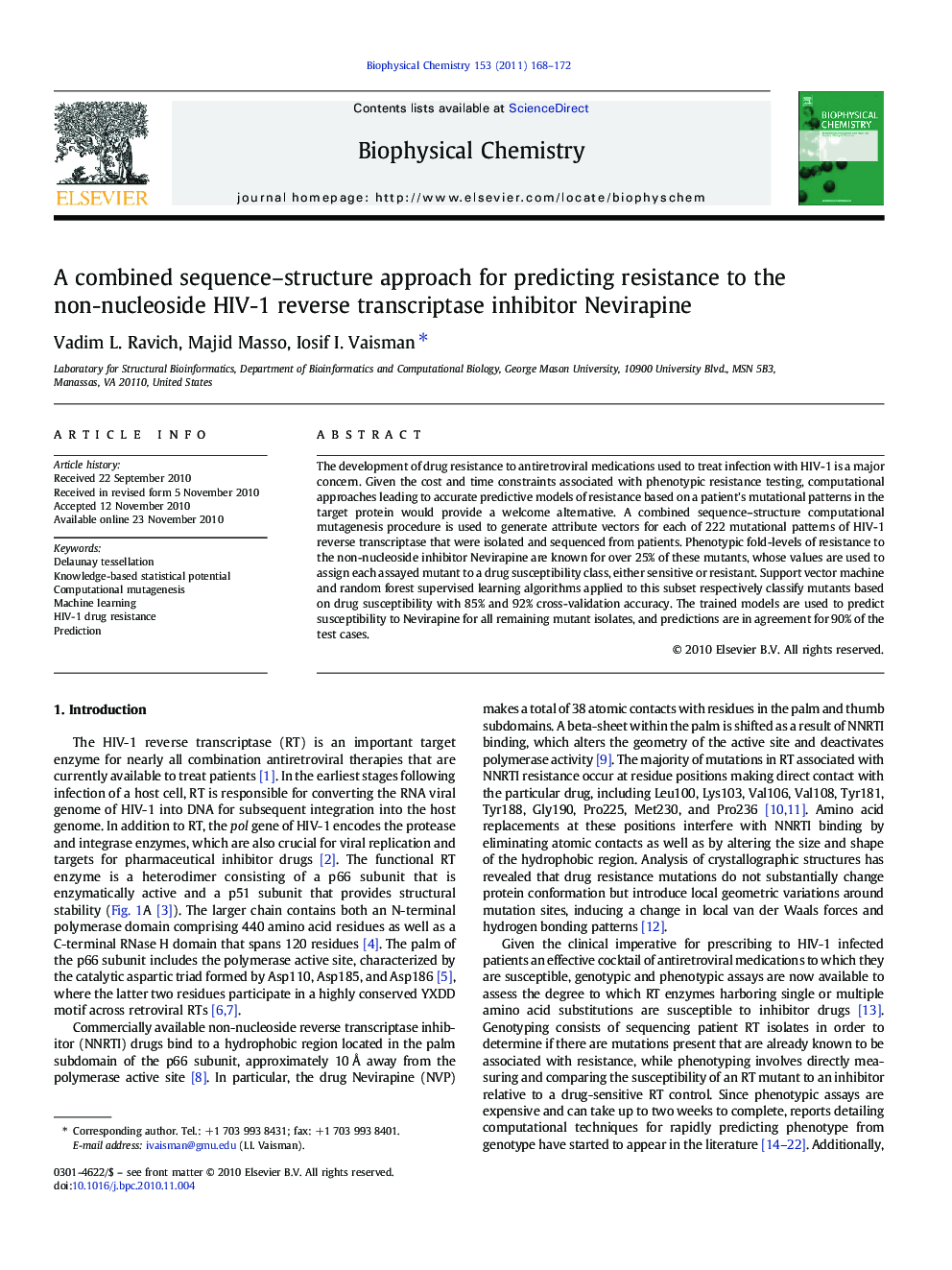| Article ID | Journal | Published Year | Pages | File Type |
|---|---|---|---|---|
| 5371516 | Biophysical Chemistry | 2011 | 5 Pages |
The development of drug resistance to antiretroviral medications used to treat infection with HIV-1 is a major concern. Given the cost and time constraints associated with phenotypic resistance testing, computational approaches leading to accurate predictive models of resistance based on a patient's mutational patterns in the target protein would provide a welcome alternative. A combined sequence-structure computational mutagenesis procedure is used to generate attribute vectors for each of 222 mutational patterns of HIV-1 reverse transcriptase that were isolated and sequenced from patients. Phenotypic fold-levels of resistance to the non-nucleoside inhibitor Nevirapine are known for over 25% of these mutants, whose values are used to assign each assayed mutant to a drug susceptibility class, either sensitive or resistant. Support vector machine and random forest supervised learning algorithms applied to this subset respectively classify mutants based on drug susceptibility with 85% and 92% cross-validation accuracy. The trained models are used to predict susceptibility to Nevirapine for all remaining mutant isolates, and predictions are in agreement for 90% of the test cases.
Graphical AbstractDownload full-size imageResearch Highlights⺠Novel environmental perturbation vectors are used to represent HIV-1 RT mutants. ⺠Trained classifiers predict RT mutant resistance to NVP with up to 92% accuracy. ⺠Performance is comparable to state-of-the-art method with an orthogonal approach. ⺠Structure contributes significantly to random forest (RF) mutant prediction. ⺠SVM and RF models display 90% prediction agreement on a mutant RT test set.
